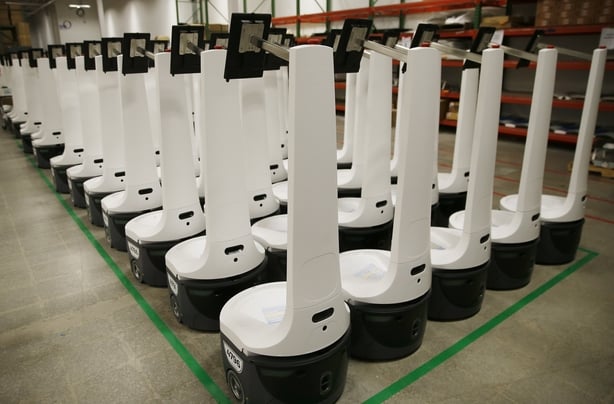Analysis: operators are looking to the sky, underground and under the sea to solve future storage challenges
The future of warehousing will take from way up in the sky to way below the ground and to deep under the sea. We start in the sky with Amazon and their future plans for a warehouse modelled on a blimp or airship floating 45,000 meters above the earth. It has drones flying in and out delivering items to ground based customers. Amazon patented this floating warehouse design in 2014, calling it an "aerial fulfilment centre".
The company have also patented a safety system which prevents debris from the drones or airships falling to the ground. These airships could fly near sporting events or festivals where smaller drones would be released delivering goods such as food or souvenirs to customers below. Can you imagine such a warehouse hovering in the sky above Croke Park, the Aviva Stadium, Slane Castle or Electric Picnic?
From Amazon News, how the company's drones would operate
Back down to earth, we have wearable robotics (exoskeletons) that make life easier and safer for general operatives in the warehouse. They are battery-powered wearable robotic suits that reduce back and limb strain by 30% to 40% without restricting the workers' movements.
These exoskeletons are filled with sensors and algorithms that workers strap on to help ease the strain of lifting heavy items. They detect how employees move and assist with lifting and loading. Delta Airlines and Panasonic are currently using these exoskeletons in their warehouses with great success.
Then, there are collaborative warehouse robots (Cobots) which look like a motorised stool with shelves and touch screens. They have sensors and work in groups navigating their way around a warehouse similar to humans. They are loaded with software connecting the inventory management data with the warehouse management system.

They can find items extremely fast in gigantic warehouses and expertly calculate the quickest, most efficient path to the products. Instead of humans spending their time walking endlessly up and down aisles in the warehouse, the robots come to them with the items.
Then, there are plans for underground warehouses. An ambitious project is currently underway near Heathrow Airport in London, where a 1.9 million square foot warehouse (almost twice the size of the current largest logistics shed in the UK) is being constructed underground.
Under normal circumstances, a massive construction project like this would usually run into planning difficulties and objections from local residents and businesses. But it has major support from the locals in the Heathrow/Hounslow area of London, partly as the income from this warehouse will be used to pay for the upkeep of a brand new public park to be constructed on the land over the warehouse.
Half the world's population lives within 200 kilometres of the coast so moving data centres to the ocean is a logical step to minimise the length of the connection to on-shore customers
In Tel Aviv, the world's first automated underground warehouse has recently been built in a disused car park under a skyscraper. The major advantage of this environmentally friendly development is it brings together customers and warehouses thereby reducing transport distances to just a few miles. One-hour deliveries are becoming a reality in commercial and operational terms.
Finally, it's time to go under the sea and Microsoft's radical warehouse data centre project called Natick which they piloted in the Orkney islands 10 miles off the coast of Scotland. This involves putting a 12.2 metre steel cylinder 117 feet below the surface of the water. This cylinder is a green data centre, powered entirely by renewables (wind, solar and tidal).
From Interesting Engineering, inside Microsoft's underwater data centre
This project leverages submarine technology and works with marine energy engineers to develop self-sufficient underwater green data centres that can provide cloud services to coastal cities. Half the world’s population lives within 200 kilometres of the coast so moving data centres to the ocean is a logical step to minimise the length of the connection to on-shore customers.
Microsoft’s overall ambition is to deploy green underwater data centres at scale anywhere in the world within three months. We in Ireland know very well the controversies that can arise because of data centres (excessive energy consumption, planning permission refusals, environmental footprints, data security, low employment levels, ugliness of buildings etc.). Recently we have learned of a subsea cable connecting Ireland and Iceland which was unveiled by data centre operator Verne Global in early 2023. Could the underwater Project Natick also be part of the eventual data centre solution?
The views expressed here are those of the author and do not represent or reflect the views of RTÉ



